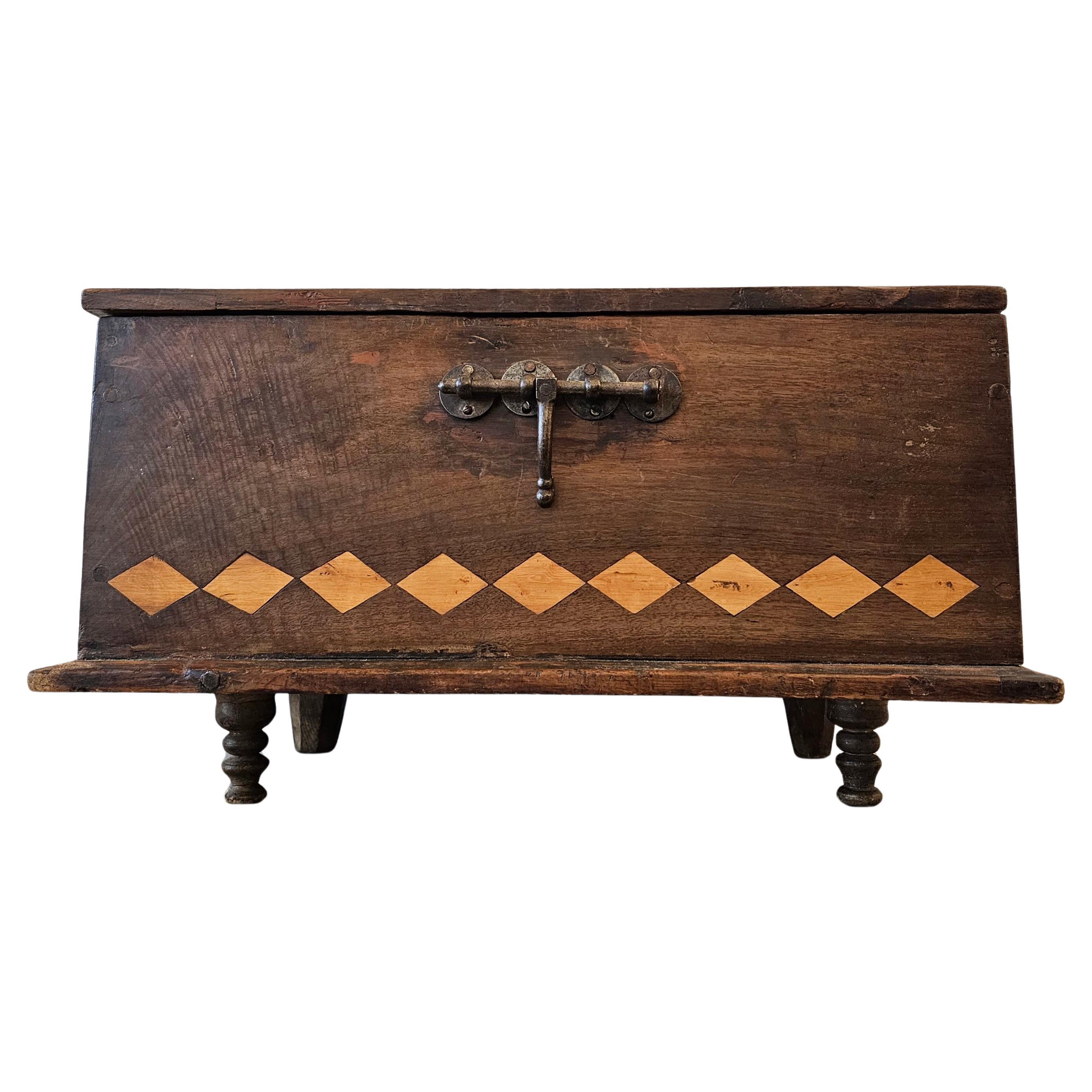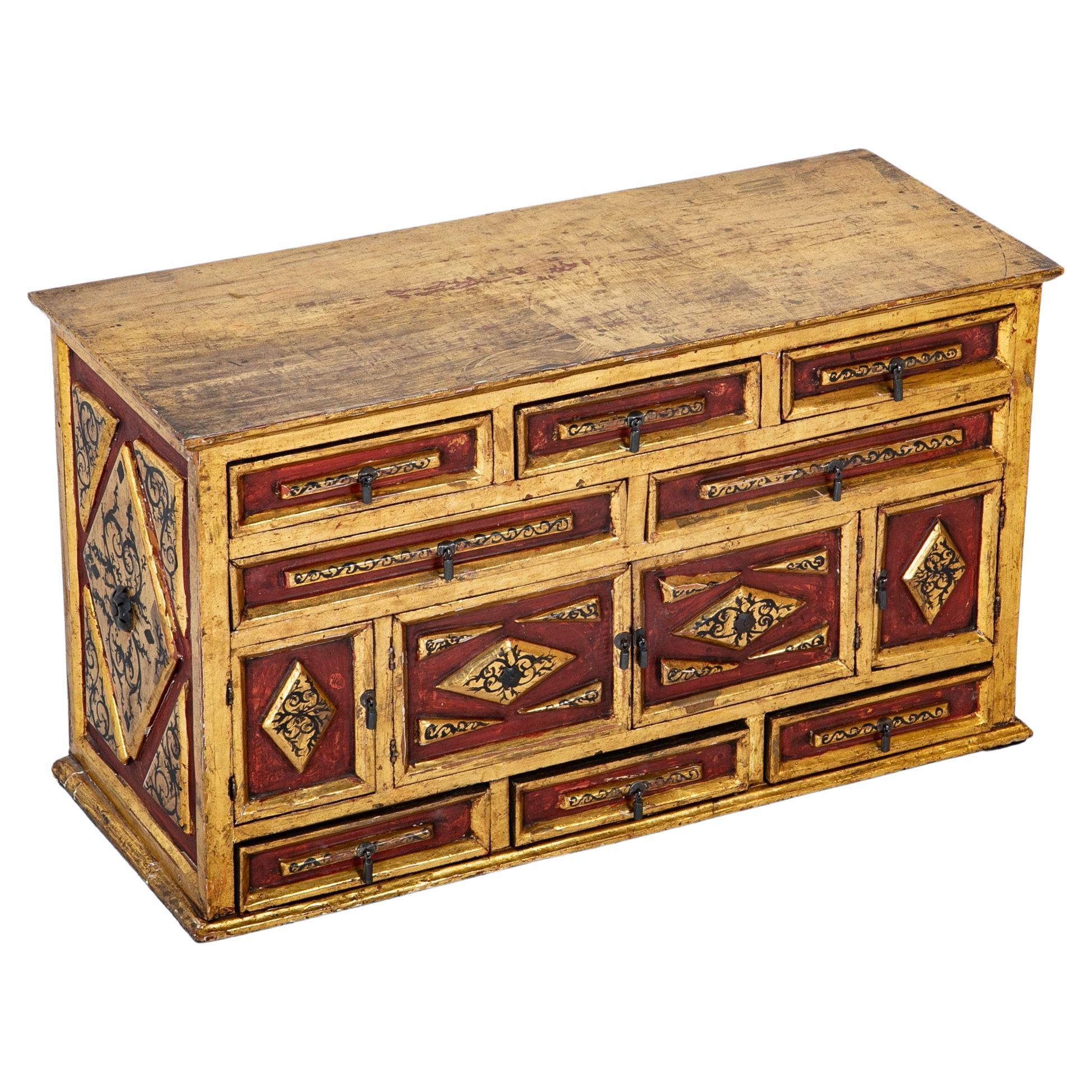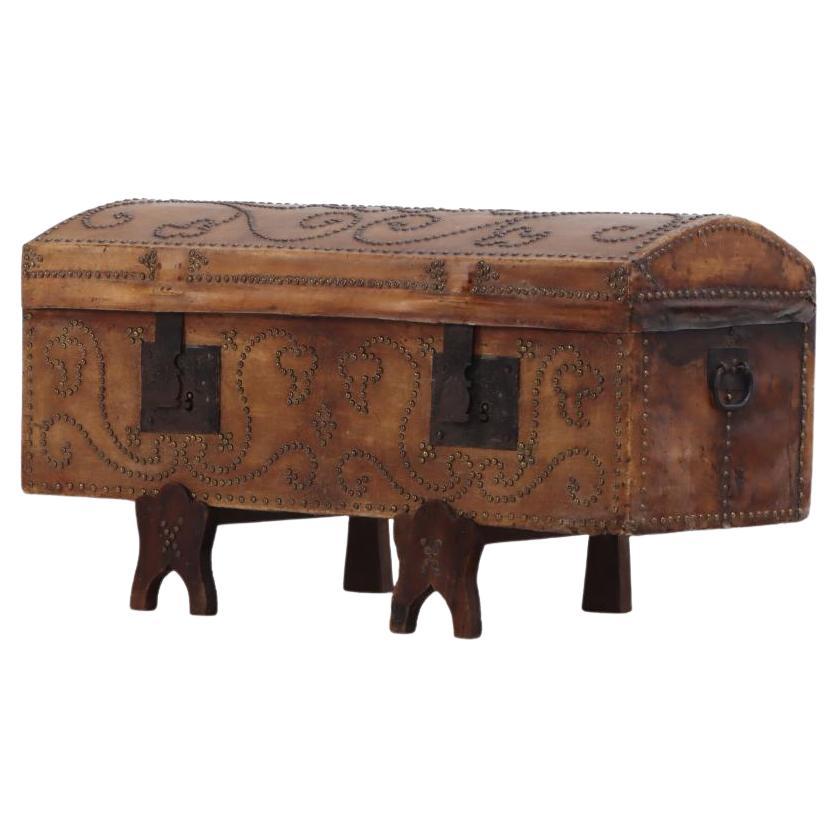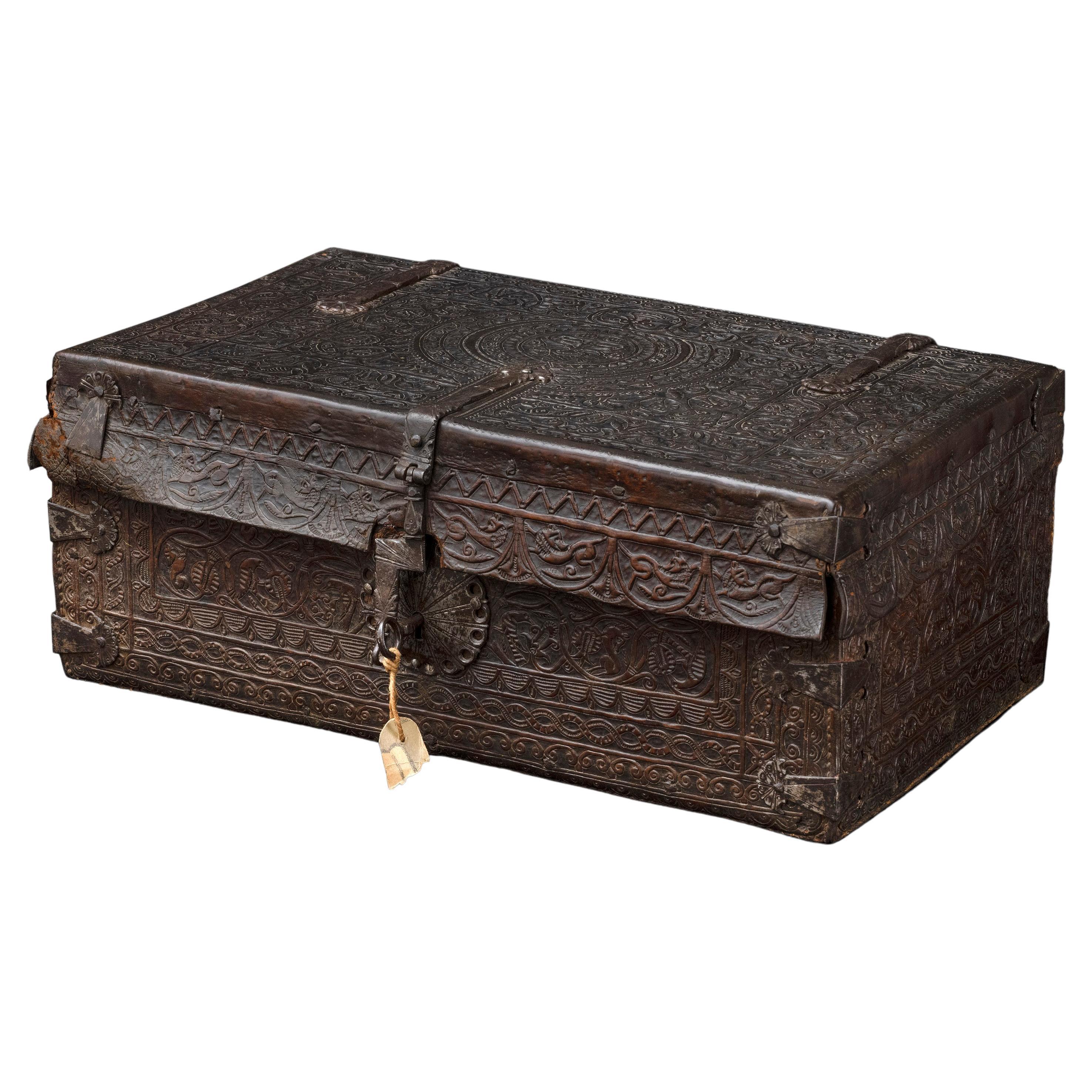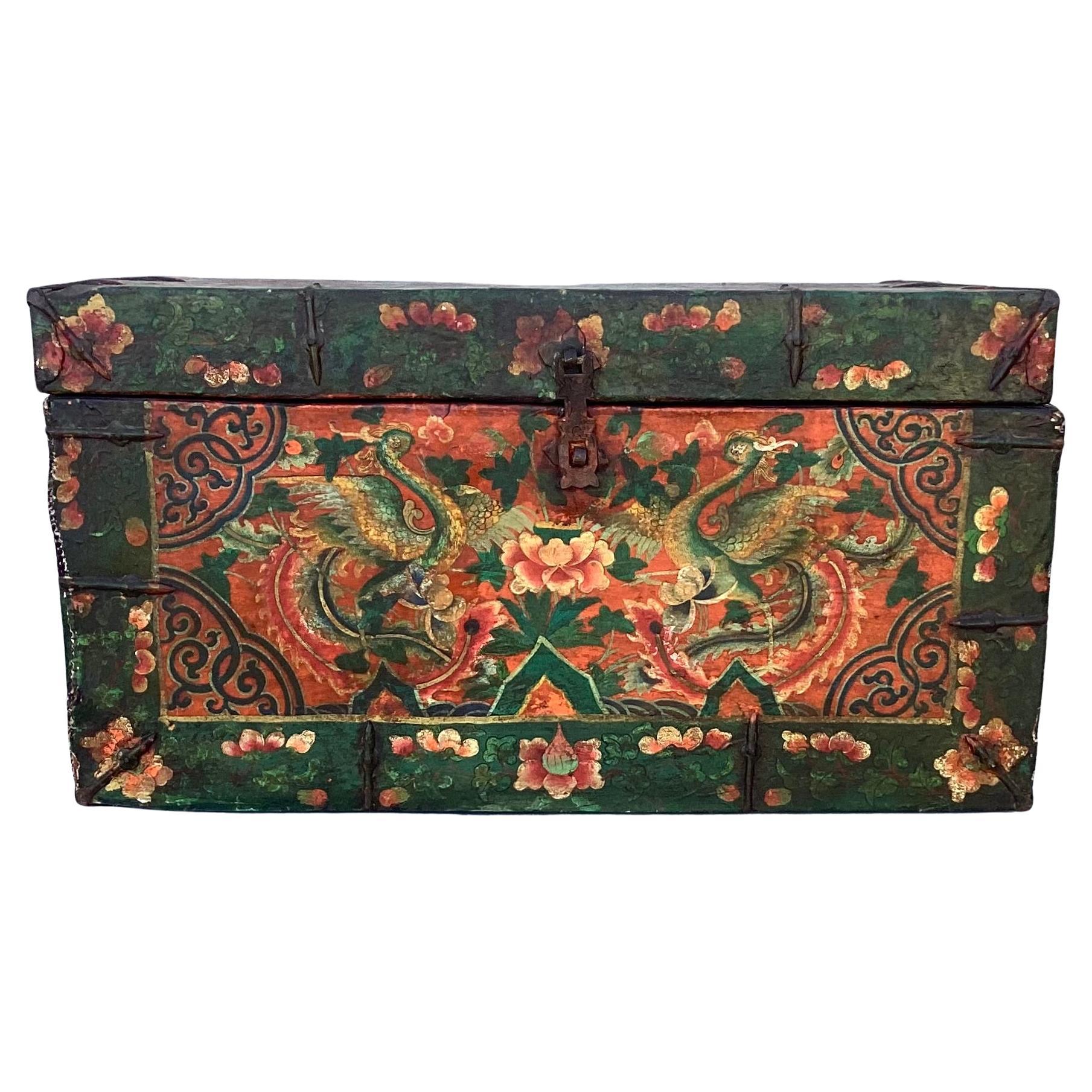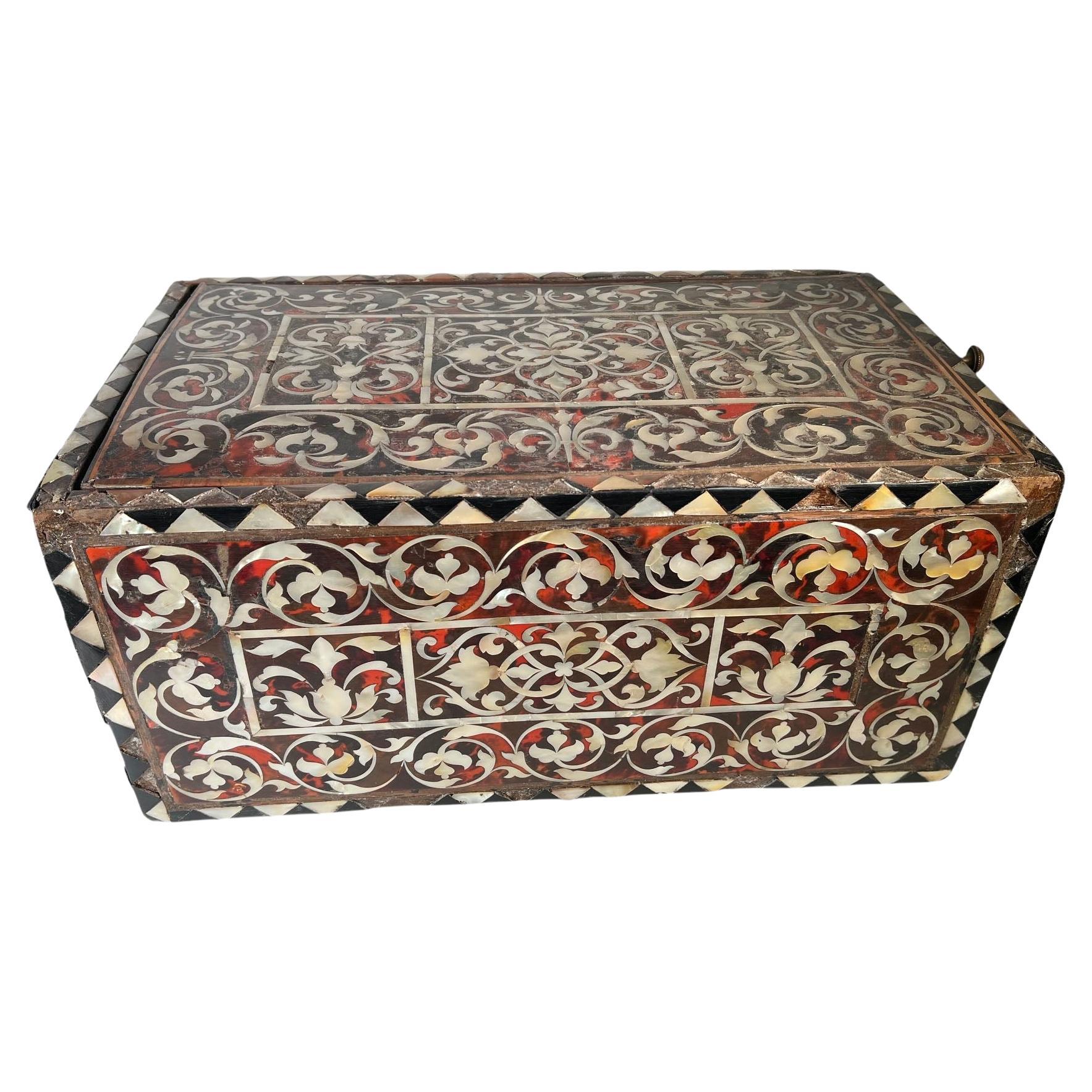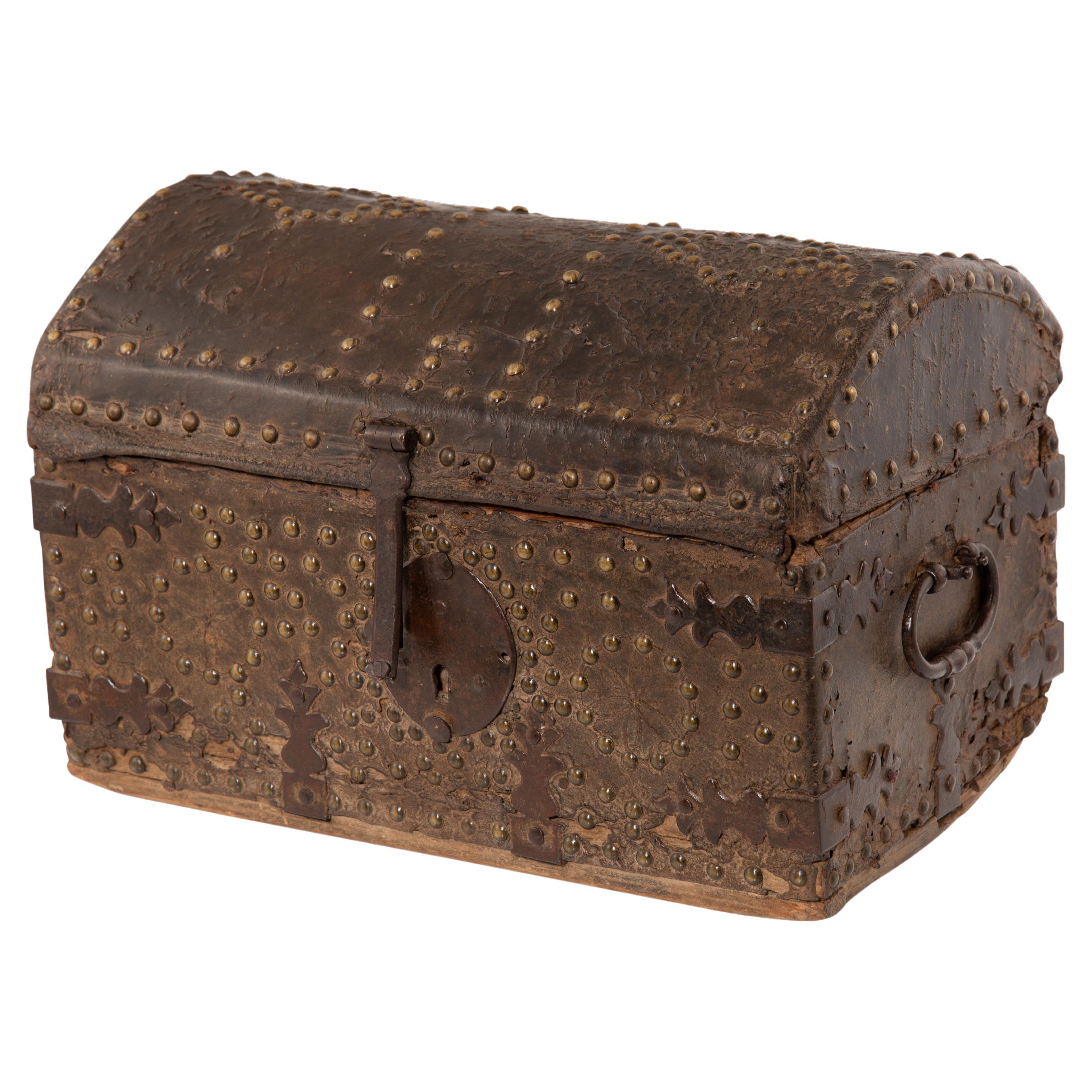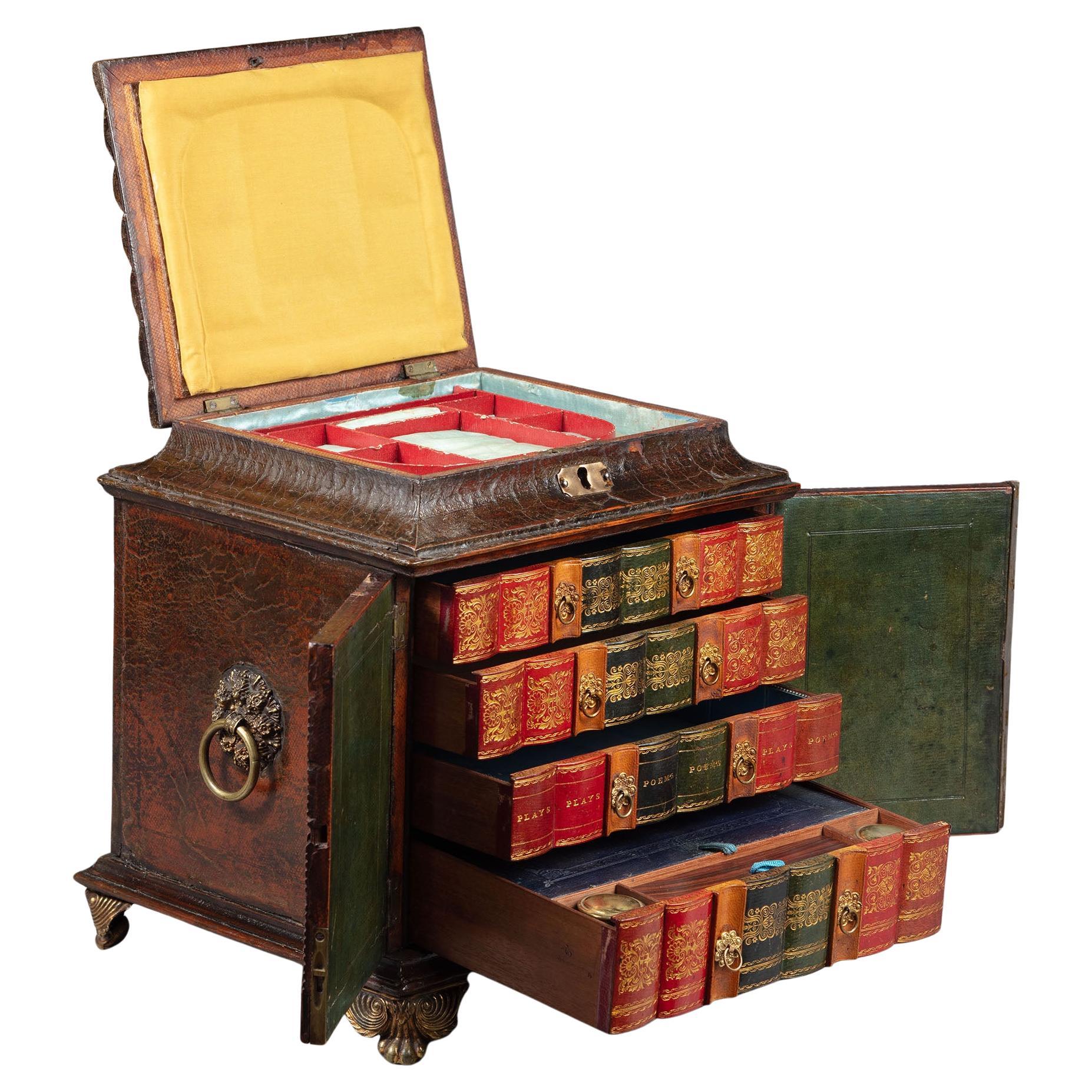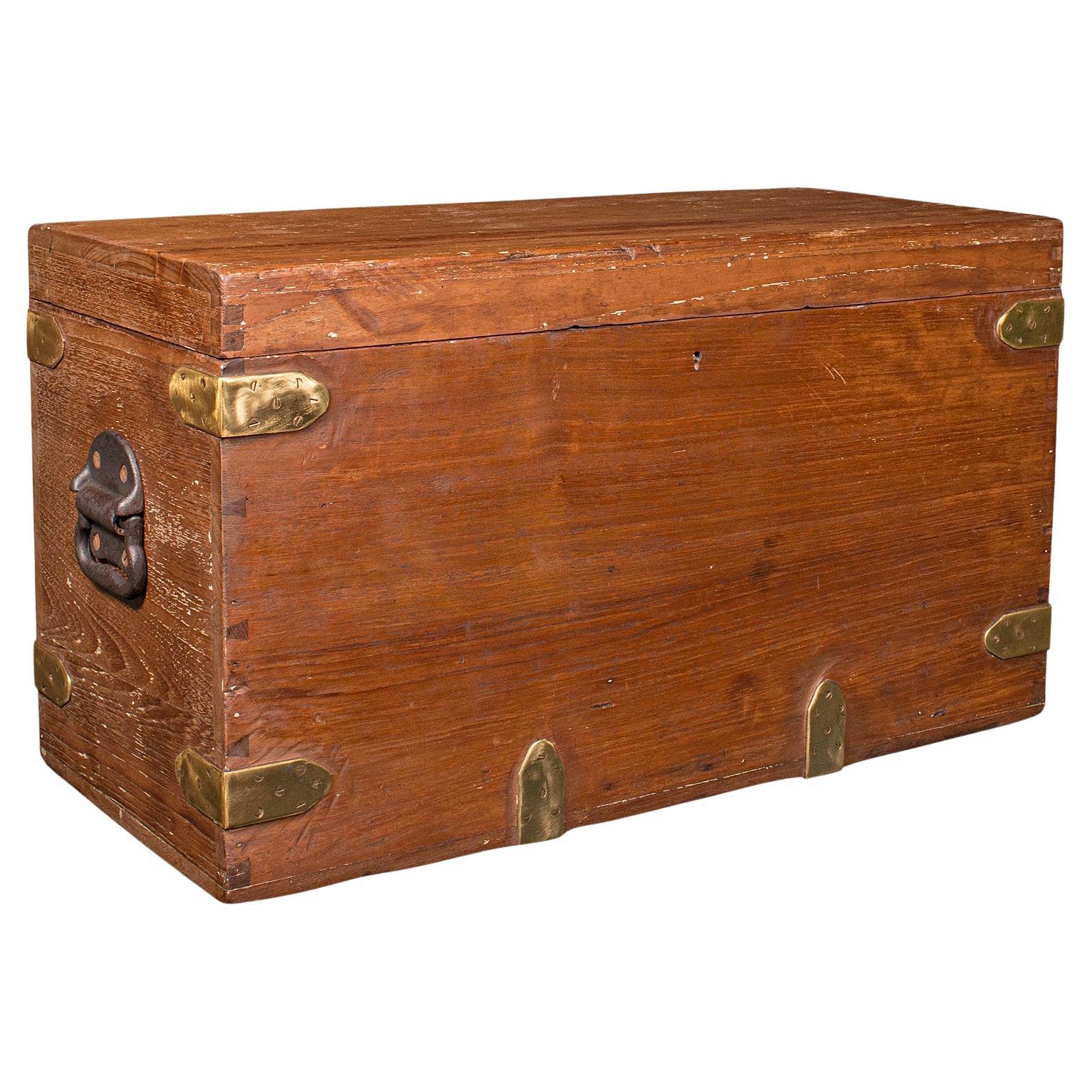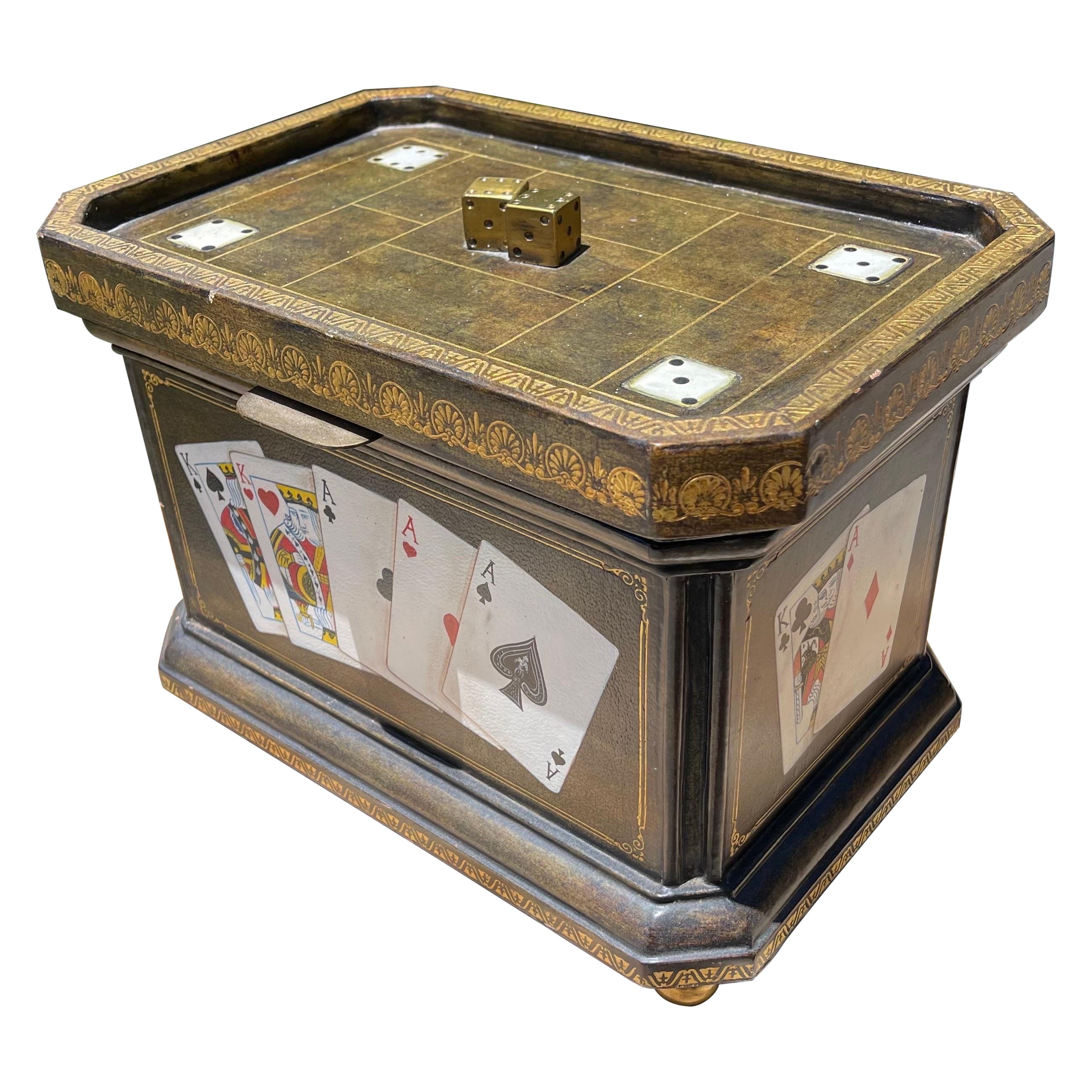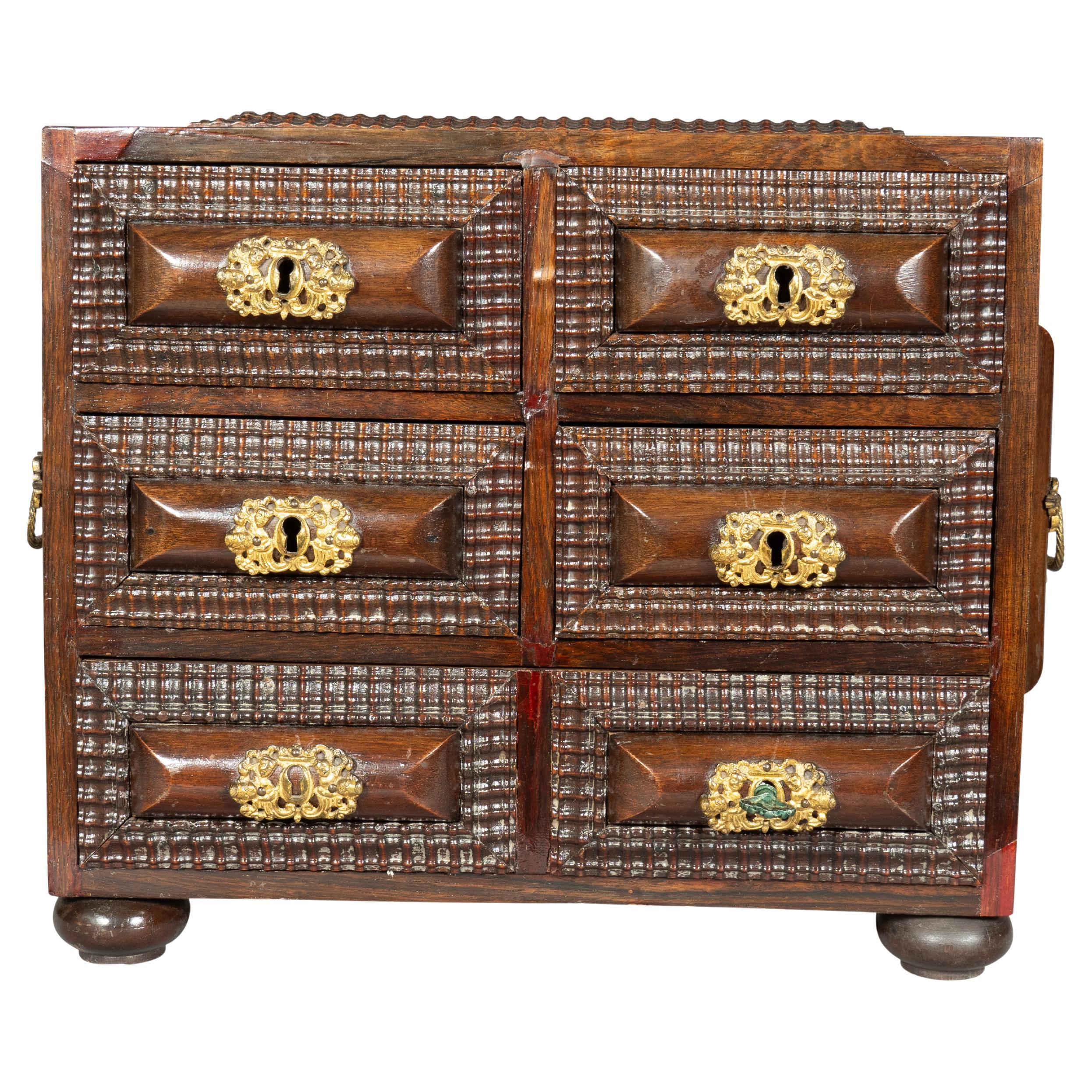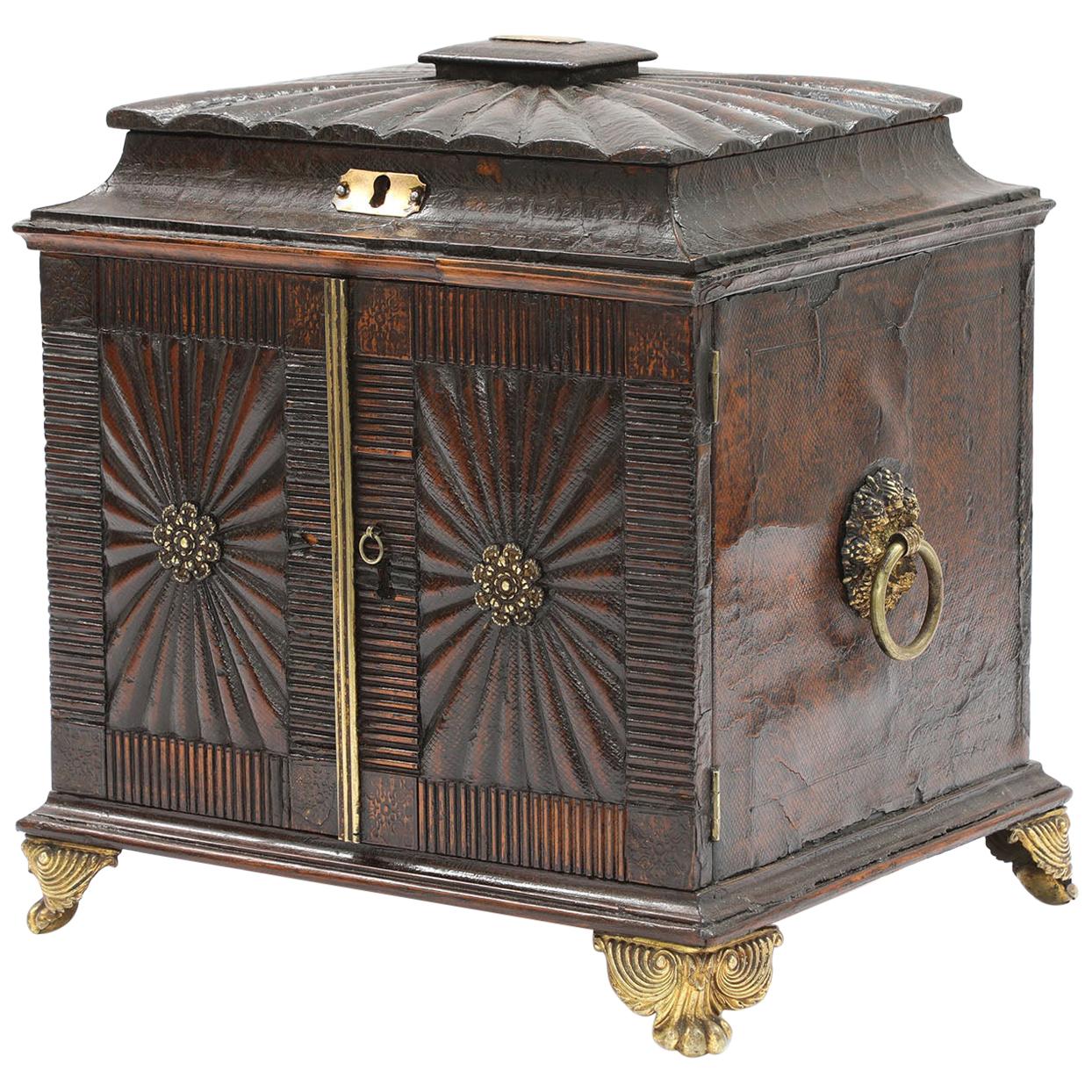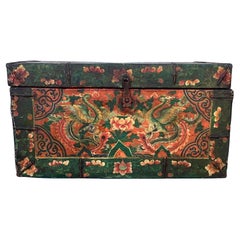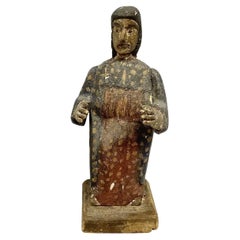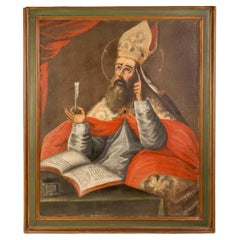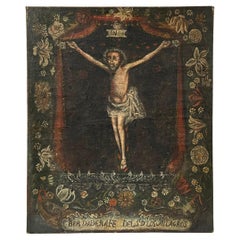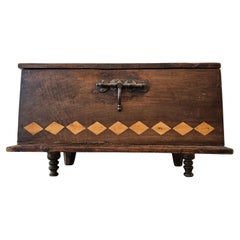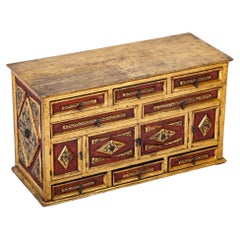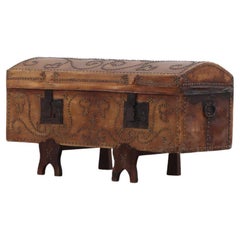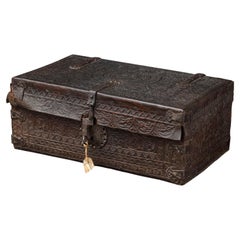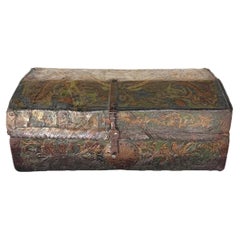
Spanish Colonial Tooled And Painted Leather Trunk
View Similar Items
Want more images or videos?
Request additional images or videos from the seller
1 of 13
Spanish Colonial Tooled And Painted Leather Trunk
$2,450List Price
About the Item
- Dimensions:Height: 9.5 in (24.13 cm)Width: 22.5 in (57.15 cm)Depth: 15 in (38.1 cm)
- Style:Spanish Colonial (In the Style Of)
- Materials and Techniques:Leather,Polychromed
- Place of Origin:
- Period:
- Date of Manufacture:18th Century
- Condition:Wear consistent with age and use.
- Seller Location:Bradenton, FL
- Reference Number:Seller: 1774 X1stDibs: LU6067240463742
About the Seller
5.0
Platinum Seller
Premium sellers with a 4.7+ rating and 24-hour response times
Established in 1991
1stDibs seller since 2021
346 sales on 1stDibs
Typical response time: 1 hour
Authenticity Guarantee
In the unlikely event there’s an issue with an item’s authenticity, contact us within 1 year for a full refund. DetailsMoney-Back Guarantee
If your item is not as described, is damaged in transit, or does not arrive, contact us within 7 days for a full refund. Details24-Hour Cancellation
You have a 24-hour grace period in which to reconsider your purchase, with no questions asked.Vetted Professional Sellers
Our world-class sellers must adhere to strict standards for service and quality, maintaining the integrity of our listings.Price-Match Guarantee
If you find that a seller listed the same item for a lower price elsewhere, we’ll match it.Trusted Global Delivery
Our best-in-class carrier network provides specialized shipping options worldwide, including custom delivery.More From This Seller
View AllAntique Tibetan Painted Leather And Iron Chest or Trunk
Located in Bradenton, FL
AntiqueTibetan chest, beautifully aged painted leather with original iron hardware. Chest has a spacious wooden interior, offering a large amount of storage. Outside features polychrome painted dragons and Asian...
Category
Antique 18th Century Tibetan Chinese Export Decorative Boxes
Materials
Wood
Antique Carved Wooden Spanish Colonial Santo
Located in Bradenton, FL
Unique hand carved antique Spanish colonial wooden santo.
Category
Antique 19th Century Spanish Spanish Colonial Figurative Sculptures
Materials
Wood
$440 Sale Price
20% Off
Large Spanish Colonial Painting, St. Augustine
Located in Bradenton, FL
18th century large Spanish Colonial oil on canvas painting of El Escriban, or The Scribe’, St. Augustine. Rich colors of red, gold, silver and b...
Category
20th Century Venezuelan Spanish Colonial Paintings
Materials
Canvas
18th Century Spanish Colonial Painting
Located in Bradenton, FL
18th Century Spanish Colonial Painting of Christ on the Cross with a floral border. Painting inscribed at bottom BER DADERAFE DELSD LOS MILAGROS(translates to “True Faith of the Lord...
Category
Antique 18th Century Spanish Spanish Colonial Paintings
Materials
Paint
Antique Spanish Colonial Oil On Canvas Painting
Located in Bradenton, FL
Rare 18th century Spanish Colonial "Christ Ascending" on Canvas. There is a figure of Christ below a cross.
Category
Antique Late 18th Century Central American Spanish Colonial Paintings
Materials
Paint
18th Century Spanish Colonial School, Cuzco, Angel
Located in Bradenton, FL
18th century Spanish Colonial School, Cuzco: Angel, oil on tin. Framed, in good condition. Rich colors of red, blue and white. Inscribed in upp...
Category
Antique 18th Century Spanish Spanish Colonial Paintings
Materials
Tin
You May Also Like
Spanish Colonial Era 18th/19th Century Inlaid Cedar Wooden Chest Box Trunk
Located in Forney, TX
A charming scarce Spanish Colonial era parquetry inlaid cedar legged storage chest (large table box / small trunk) with nicely aged warm rich dark patina. circa 1790
Rustic handmade...
Category
Antique 18th Century Spanish Colonial Decorative Boxes
Materials
Iron
Spanish Colonial Gilt Wood Vargueno With Red and Black Paint
Located in Stamford, CT
Spanish Colonial style painted and gilt wood table top vargueno, a chest with eight drawers and four doors with iron drop pulls. A sweet little chest with a lot of personality, decor...
Category
Early 20th Century Baroque Decorative Boxes
Materials
Iron
A Spanish studded leather domed trunk, C 1870.
Located in Philadelphia, PA
Wrapped in a light shade of leather, the metal stud decoration stands out on a trunk raised on gothic arched wooden supports. It will look wonderful on a sofa table as a hiding spot ...
Category
Antique Late 19th Century Spanish Decorative Boxes
Materials
Metal
Boiled Leather Trunk, Spanish, 17th Century
Located in Bruxelles, BE
Leather trunk
Spanish, 17th century
Boiled Leather, wood and iron
Measures: 22 x 53 x 32 cm.
Provenance :
- collection Metz-Noblat, Château de Clevant, France
Rectangular trunk of the form and size of a small suitcase with wrought iron hinges and lock-plate.
Wood, covered with leather, cut and embossed with every surface of the thick cow hide covered in interlace, zoomorphic features.
The construction method is boiled leather, often referred to by its French translation cuir-bouilli: a process used to change flexible, vegetable-tanned leather into rigid, moulded objects. For shaping of the vegetable-tanned leather, heat and moisture were used, as indicated by the term boiled leather. No written medieval sources describing the production of decorated cuir bouilli objects survive, so knowledge of the process relies on the important studies of the Scottish leather historian John William Waterer. A large range of methods, materials and techniques could be used in various combinations. The vegetable-tanned leather, made supple with moisture and heat, was stuffed, shaped and nailed to the rigid wooden coffer support. The stuffing material was probably modeled beeswax or stearin wax. To shape the leather, to create its topography, « Cushions » were made by lacing a thread through an awl hole and attaching the flexible leather and stuffing to the rigid wooden support on the bottom. Then the decoration was done: lines were incised through the upper layer of the leather (epidermis) with different thicknesses of knives or needles. Contours were created with deep v-shaped cuts, decoration with thin incision and final details with a needle point. For the incision and pouncing stage, the leather was probably kept heated and moistened for suppleness.
Once dry, the leather would be hard and rigid.
the saturated leather is worked over a form, possibly even damp sand, with the pattern shaped using bone or wooden tools. Compare to metal, leather was lighter and it offered protection from cuts and punctures. Cuir bouilli objects were produced by specialist leather workers and needed skillful craftsmanship.
The surface is filled with roundels shaped foliages enclosing animals, lions and peacocks. The foliate arabesques creating a vegetal connection tweet the animals create the impression of a lush verdant space . The vegetal pattern here employed in combination with geometrical pattern came from the pre-islamic artistic traditions of the Byzantine and Sasanian empires. An aspect of Islamic geometry Is the basic symmetrical repetition and mirroring of the shapes that create a sense of harmony.
The decoration of this truck is inspired by the islamic « arabesque » a form of vegetal ornament composed of spirals, intertwining plants and abstract curvilinear motifs. An arabesque character is given to the birds of the decorations through extreme stylisation. This arabesque maintained the classical tradition of median symmetry, freedom in Detail and heterogeneity of ornament.
The presence of the peacocks is a paradisiacal allusion: in popular Islamic literature they were among the original inhabitants of the garden of Paradise expelled with Adam and Eve. Peacock as a decorative motif may have originated in the West, despite their eastern provenance. There was an ancient belief that the flesh and feathers of peacock do not decay. This led to the peacock becoming a christian symbol for Christ’s resurrection.
Renowned for their decorative wall hangings, seventeenth-century Spanish leatherworkers also produced utilitarian objects, such as this trunk. A similar trunk is on display at the Metropolitan museum of art ( 09.158.1).
Related literature :
Davies L. 2006. Cuir bouilli. Conservation of leather and related materials, 94-102, Oxford: elsevier Butterworth-Heinemann
Grabar, Oleg. The Mediation of Ornament. Princeton: Princeton University Press, 1992
Gabriela Germana Roquez, "El mueble en el Peru en el siglo XVIII...
Category
Antique 17th Century Decorative Boxes
Materials
Iron
Spanish Colonial Tortoiseshell And Mother Of Pearl Box
Located in Dallas, TX
Circa 1750. Tortoiseshell and mother of pearl box with sliding top from Mexico 18th century. Beautiful designs all over. As is condition.
Category
Antique 1750s Mexican Decorative Boxes
Materials
Tortoise Shell, Mother-of-Pearl, Wood
Studded trunk. Wood, leather, metal. Spain, 18th century.
Located in Madrid, ES
Studded trunk. Wood, leather, metal. Spain, 18th century.
A small chest or trunk with a rectangular base and a curved lid, decorated on the outside with a leather cover and a serie...
Category
Antique 18th Century European Neoclassical Revival Decorative Boxes
Materials
Metal, Other
Recently Viewed
View AllMore Ways To Browse
Spanish Colonial Plates
Peruvian Leather Furniture
Peruvian Leather
Spanish Leather Box
Antique Embossed Trunk
Spanish Leather Trunk
Leather Tooled Peruvian
Spanish Colonial Leather Trunk
Asprey Box
Bentwood Boxes
Murano Glass Blue Box
Casket Silver Box
Indian Carved Wood Box
Lion Box With Handles
Paper Mache Box
Sothebys Antique Jewelry
Swan Box
Antique Ebony Box
